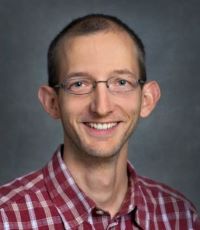Geoscientific Colloquium
Coupling geophysical methods and remote sensing data to improve the quantification of Arctic permafrost dynamics in a changing climate.Â
Organiser: Dr. Baptiste Dafflon (Lawrence Berkeley National Laboratory)
Location: only online (via Zoom)
Start Time: 12/08/2021 16:15
Category: Geoscientific Colloquium

Understanding interactions between permafrost, soil, land surface, vegetation and atmospheric processes is critical for predicting the storage and flux of water and carbon, particularly in the changing Arctic environment. However, quantifying above-below ground interactions in the Arctic is challenging due to process complexity, lack of sensing systems jointly monitoring key processes in different compartments, and the spatial variability of above-below ground interactions as a function of position within the ecosystem and season. This presentation focuses on recent developments to address these challenges, including (i) co-incident characterization and monitoring of above- and below-ground properties using Electrical Resistivity Tomography (ERT) and aerial imagery, (ii) low-cost and low-power Distributed Temperature Profiling (DTP) systems for acquisition of soil and snow temperature data with unprecedented spatial density, (iii) inverse modeling techniques that takes advantage of streaming hydro-thermal-geophysical datasets to estimate conventionally difficult to quantify properties, such as soil thermal parameters and organic carbon density, and (iv) strategies to integrate geophysical methods, point-scale measurements and remote sensing data together in order to improve how localized ground based observations can tractably be scaled to landscape scales. Overall, advances in sensor, inversion and integration approaches provide a window on how complex Arctic systems behave at local scales as well as their aggregated responses at landscape scales.
Geowissenschaftliches Kolloquium "Perspectives of non-seismic applied near-surface geophysics"
Zoom-Link: https://uni-bremen.zoom.us/j/96524048625?pwd=VXAyWEVqNHo2Mzd3N1IrSVVrSVNIZz09
Meeting-ID: 965 2404 8625
e-Mail: BDafflon@lbl.gov
https://eesa.lbl.gov/profiles/baptiste-dafflon/
back

